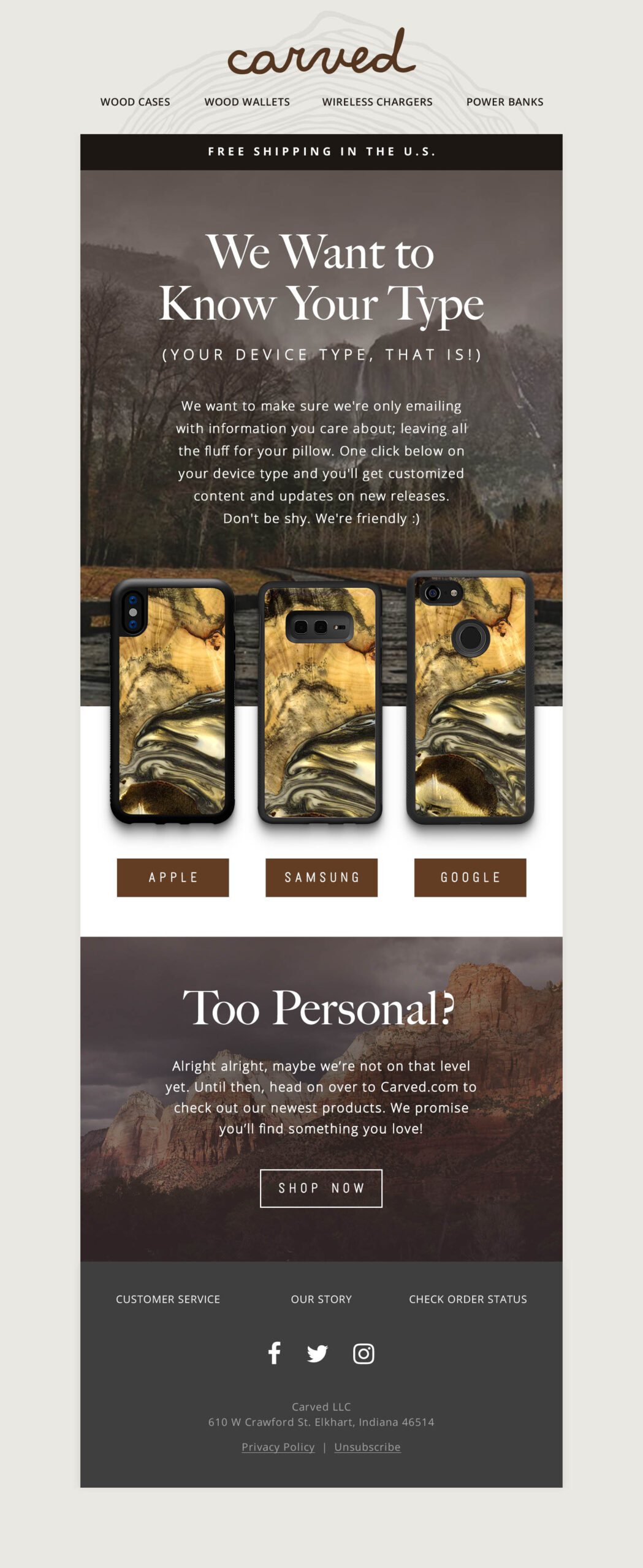7 Proven Email Personalization Tactics to Try in 2019

The concept of one-to-one marketing has been around for years, but many brands still struggle with personalizing their communication. While the idea of going from batch and blast to 1:1 can be daunting, if you’re not making strides to personalize your email marketing efforts, you’re leaving money on the table and unlikely to hang on to your subscribers for very long.
Sixty-three percent of customers say they’re annoyed when a marketing message is too generic or vague, and even a killer promotion can’t salvage a blanket approach; according to data from Marketo, 79% of customers will only utilize a promotion if it’s been tailored to their previous interactions with a brand.
“Personalization is about so much more than simply including a subscriber’s first name. While this can be a useful tactic to personalize subject lines, the relevancy of the email content is far more important. We can show subscribers we care by using the data we have to craft thoughtful messages based on their interests and past purchase behavior.”
– Stephanie Griffith, Strategist, CRM & Email at Elite SEM

People want to feel like your brand understands their wants and needs. They don’t want to be treated like any other subscriber on your email list. Fortunately, in today’s digital world — a world brimming with data — you’ve got all the tools at your fingertips to build more personal relationships with your customers.
The first step in your personalization efforts is to inventory the data you have available on your customers. Most brands have enough information to know where a contact falls in the funnel (prospect, first time customer, repeat buyer), basic demographic or location data, and past purchase behavior (basket size, categories purchased, number of purchases). Knowing what data you have to work with will help determine where to start, but if you’re looking for inspiration, here are seven simple-to-execute tactics to get you going:
If you’re still relying on batch-and-blast sending rather than segmenting based on targeted audiences, it’s time to reevaluate your email marketing strategy. According to the Data & Marketing Association, segmented and targeted emails generate 58% of all email revenue. Start segmenting based on category purchased, customers versus prospects, or demographic data such as location or gender, and tailor your messaging to these groups accordingly to boost engagement and increase conversions.
If you’re spending money on prospecting via paid search or social, make sure the content of your email signup overlay and/or welcome series aligns with messaging featured in your ads, especially if a unique promotion or product is being offered. Segment your email groups by landing page or opt-in source and keep your messaging personalized based on their original intent, and you’ll have a much more successful campaign as a result.
Encourage your subscribers to tell you more about them, and use that information to create relevant and meaningful content. Send your larger email list a quick one- or two-question survey to help you better hone your strategy. If you’re a software provider, ask them something like “Are you considering software for yourself or for the office?” If you run a restaurant, how about “Do you usually eat out with 1) friends 2) a significant other or date or 3) your family?” Questions like these can help you deliver more appropriate and targeted content to your subscribers.
In the below example from Carved, an Elite client that sells one of a kind phone cases made from wood + resin, we asked new subscribers to tell us their device type in order to serve relevant products moving forward.

We incorporated this message into the brand’s Welcome Series and used click-tracking within the ESP to update the contact profile, making it easy to create segments based on each user’s response.
Behavioral triggers — like cart or browse abandon campaigns — are a great way to deliver timely messages at a time when the customer’s interest is still high. Increase the level of personalization in these campaigns by displaying the specific item they browsed or abandoned so the email content is aligned with their onsite behavior. Take things one step further with dynamic product recommendations to serve up similar or complementary items that might also be of interest to your customer.
What’s more personal than an anniversary? This is a great opportunity to acknowledge your subscribers’ loyalty to your brand and make them feel special. You can send out triggered messages based on when a contact first subscribed, when they made their first purchase, or to celebrate their birthday. A simple “thank you” goes a long way for these communications, but you can also consider rewarding these contacts with a discount on their next purchase to help drive conversions and deepen their loyalty to your brand.
You might have A/B tested your emails to determine the best days and times to send them, but did you also A/B test by time zone? Sending an email at 5 a.m. might mean killer early-morning opens in New York, but in Oregon they’re popping up at 2 a.m. If your customers have their phones on, those email alerts could even wake them up. Make sure you segment your list by location and time zone. Once you’ve done that, then you can work to determine the best sending days and times for that unique cohort.
Preference centers put the power back in the hands of your subscribers, allowing them to control the frequency and content of communication they receive from your brand. Choose 2-3 key pieces of information that will help you tailor your emails. Ask your subscribers which category they’re most likely to shop and use that data to create segmented content for each group. Prevent attrition on your email list by giving subscribers the option to opt-down rather than fully opting out. Collect your contacts birthday so you can treat them with a surprise on their special day. Pro-tip: Don’t include too many options in your preference center. This can become difficult to manage and the more info you ask for, the less likely contacts are to complete the form.
There are endless opportunities to add personalization to your email marketing program, but you can’t do them all at once. Choose just one tactic above you can execute on this week or later this month to get started. The results will speak for themselves.
